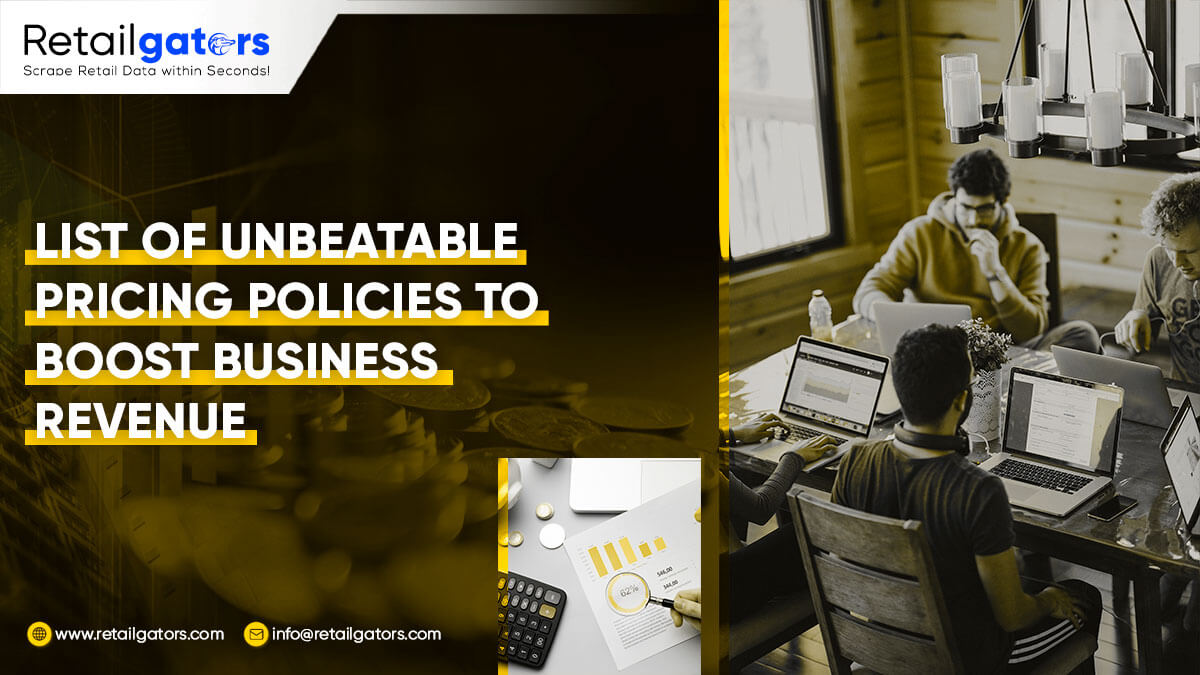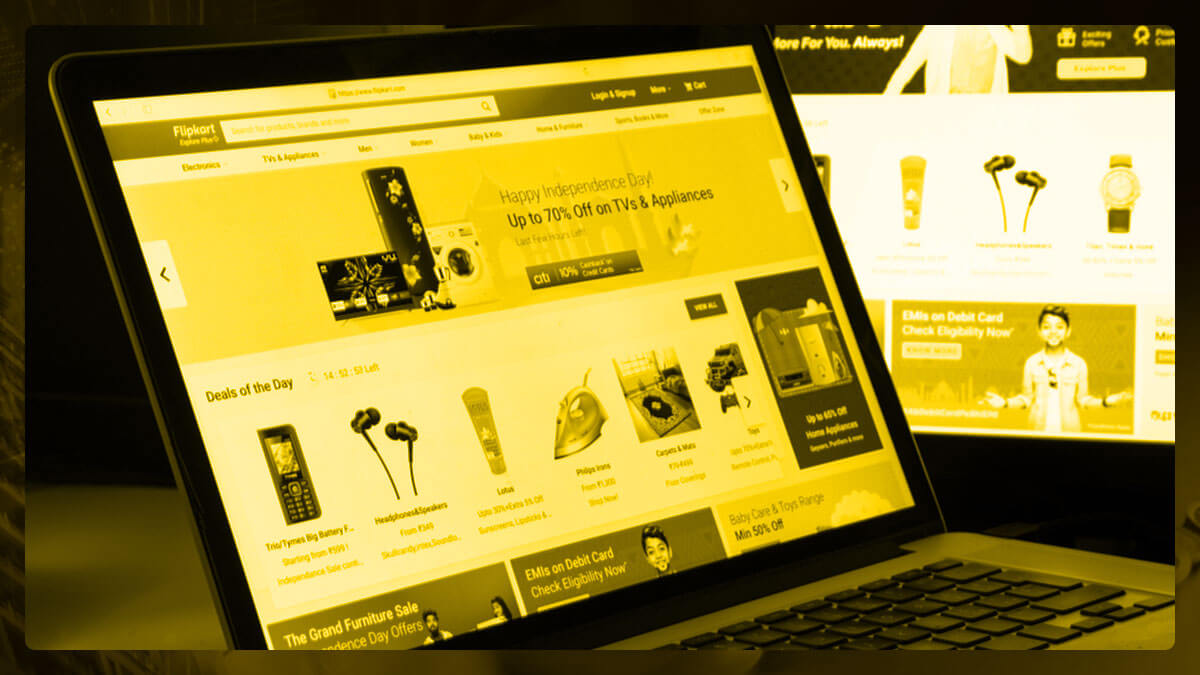
An online retailer's or merchant's method for setting product prices that consider manufacturing costs and revenue targets, such as average order value (AOV) and lifetime customer value, is known as a pricing strategy. (A "pricing strategy" is not a discounting strategy, though you can use discounting strategies as part of your overall price strategy.)
Depending on your objectives, it assists you in determining what pricing would yield the maximum rates of client acquisition, customer retention, sales, profits, or conversion.
In other words, if you price your goods too expensive, you risk losing sales and cart abandonment. However, if you overprice your goods, you risk losing sales. There are many other pricing intelligence methods, but these 10 are the ones rising e-commerce businesses employ the most.
Defining Pricing Strategies

Choosing the price that consumers will pay for a good or service is the primary goal of e-commerce pricing strategies. By increasing the cost of a product by a profit margin, e-commerce pricing strategies derive. Product A, for instance, costs $10. The business includes a 10% profit margin, or $1. The total cost of the item is $11.
E-Commerce data scraping could be more straightforward. Several factors determine the retail price of a product.
Several factors determine the retail price of a product. Consider these factors:
- Product demand and supply
- Costs (of shipping, warehousing, import duties) (shipping, warehousing, import duties)
- Business expenses
- Taxes
- Market cost
These elements determine the final prices of your goods. Please keep in mind, though, that the success of your e-commerce price plan is heavily influenced by what the market will bear. So, you can charge much more than you had thought.
Importance of e-commerce Pricing Policies

You can decide on the prices of your products in an objective manner using an e-commerce pricing strategy. You can decide the price of your goods while ensuring your company makes enough money.
So, let's look at three key reasons why developing an e-commerce pricing plan is essential to the overall success of your company:
Price comparisons

Research shows that 74% of consumers use the internet to look up pricing from different retailers.
Why does this matter?
Therefore, you cannot arbitrarily assign prices. You will lose clients if you set your price too high. Potential clients can only become wary of you if your price is reasonable. Therefore, you must ensure that your pricing strategy establishes fair and trustworthy pricing consistent with the industry standard.
The Price implications
Making no allowance for cost factors while developing an e-commerce pricing plan is a standard error.
How so?
Getting a handle on cost factors is the first step in determining the proper pricing for your goods. As an illustration, your product costs $10. But your competitors offer products for less than $10.
To keep up, you decide to match the pricing of your competitors. You are spending less money on the product by doing this. Therefore, when developing your e-commerce pricing plans, cost factors are crucial.
A Product's alleged worth

The perceived worth of a product ultimately affects an e-commerce pricing strategy. In other words, a product is only worth what consumers will pay.
You might be better off switching items if client pricing points are lower than your cost concerns. On the other hand, you may be pleasantly delighted to discover consumers willing to spend far more than your entire cost.
Best E-Commerce Pricing Policies to Create Competitive-Edge in the Market

1. Cost-Based Pricing

More people use this pricing method than the others on the list. This pricing method is used by those who are fresh to e-commerce.
The cost-based pricing technique is relatively straightforward. It is more important to focus on business than on customer service. The company establishes the price based on the profit it hopes to make. The amount potential customers will be willing to spend should be considered.
According to this technique, you must sum the cost of the items, all business expenses, and the desired profit per item to determine the selling price of your goods. Your selling price will be the total of all the items.
For illustration, a product might cost $1 overall. Management believes a 20% profit margin makes sense after evaluating the market. The item now has a retail price of $1.20.
Let's examine the benefits and drawbacks of the e-commerce pricing strategy:
Pros :
- Easy calculation technique
- When there is a vast product catalog, beneficial
- places the primary emphasis on cost control
Cons :
- Cost rises generally result in price hikes.
- Calculation errors could be costly.
- It needs to monitor cost control very closely.
2. Competitor Pricing

The most straightforward strategy is to copy your rivals' pricing. In essence, average market prices are used in competitor pricing to determine the price of your goods. If your costs are too high compared to your rivals, this strategy could not be successful. As an illustration, a local grocery business might have more overhead expenses than a major national supermarket chain.
However, setting up an e-commerce pricing plan using rival prices is simple, especially when launching new brands or products into your specialized market.
Look at the illustration below:
- A moisturizer will cost you approximately $14.
- The company spends $7 on expenditures.
- The package now costs $21 in total.
- Now that the company has determined the average selling price, it is $30.
- The company can calculate its potential profit by deducting its expenses from the average selling price.
- $30-$21=$9. Each moisturizer will bring in $9 for the company.
Let's examine the benefits and drawbacks of the e-commerce pricing strategy:
- Easy-to-use technique
- Enables your company to lower costs to outbid competitors
- Excellent for newly launched enterprises
Cons :
- Substantial market research is necessary.
- Prices must be modified to reflect changes in the market.
- Careful cost management is required to prevent unexpected losses.
3. Customer Pricing

Cost-based pricing and competitor-based pricing, sometimes referred to as value-based pricing and consumer-based pricing, are both used. There is a slight variation in this pricing technique, though.
Companies must factor in the value they offer to their clients in addition to the cost of the product, company overhead, and the average selling price.
The best thing about this tactic is that it enables you to charge your clients a fair price without sacrificing your company's ability to make money.
Value is your company's Unique Selling Proposition (USP), which you provide to clients. The value a company offers its clients is the primary consideration in this strategy. Consider what distinguishes your products or services from those available on the market. Is it your product's quality, quantity, packaging, or the level of customer service you give to your loyal customers? Find out what you can offer your clients to make your items more valuable and earn their loyalty.
Now let's get to the math behind this pricing strategy:
- Make a cost and expense calculation for the product you are selling. Say it costs $12.
- Next, figure out the average selling price based on competitors. Say it costs $18.
- The profit you will make is $6 ($18–$12).
- If you add value to your products, you provide superior packaging for which your competitors don't increase the price. $18+$2= $20.
- Your profit on each product sale has grown from $6 to $8.
- Brands can increase their margins of profit.
- Brands can increase sales, particularly with high-end products.
- With this tactic, differentiating from competitors works incredibly well.
Cons :
- Susceptible to competitors selling less expensive goods
- Value-based pricing is influenced by how customers perceive value.
- Brands must never sacrifice quality or customer service.
4. Dynamic Pricing

This pricing technique is flexible, as the name implies. Based on market supply and demand, the prices determined using this technique are liable to vary.
Depending on the level of market rivalry and the product's availability, a corporation may raise or lower the price of its items. Market or new competition may lead to price reductions to make products more affordable and attract more customers.
Similarly, a business may raise its pricing if there is a great demand for the items on the market and only a few suppliers can meet the need. Additionally, if the business has purchased surplus stock and worries that it may become outdated, expire, or suffer damage, it can sell it at a loss to clear the stock.
A company must be aware of the prices established by other businesses if it wants to implement this pricing strategy.
This pricing strategy works well for online retailers with the time and resources to monitor their competitors' prices, market demand, and suppliers who specialize in the same market niche.
- Increases profits by profiting from increases in demand
- Works incredibly well with high-demand products and aids in maintaining costs Competitive compared to other merchants
Cons :
- When demand declines, sales could stall.
- Customers may wait for the "ideal" time due to fluctuations.
- Possible misunderstanding of the actual cost of your products
5. Bundle Pricing

Bundle pricing works for you if you are in a highly competitive industry. This price approach also helps to increase e-commerce sales and draw customers to your store.
It is relatively easy to calculate the price using this technique. Putting together a set of related products and selling them at a discount is all it takes.
Bundling products can increase a business's average order value. The business will record the sale of numerous items as a single transaction.
One t-shirt, for instance, costs $10. A consumer pays $15 for three items. With almost any kind of product, this strategy is incredibly effective.
Let's examine the benefits and drawbacks of the e-commerce pricing strategy:
- Increases overall sales and income
- Reduces inventory
- Encourages upselling to clients
Cons :
- May eventually result in lower profit margins.
- Buyers may only pay part of the retail price for a single item.
- Combining unrelated products could make shoppers understand.
6. Loss-Leader Pricing

By showcasing the products' low costs, marketers draw customers' attention, leaving them perplexed about how a business can make money from selling at such low prices. The key is that they don't make a profit by selling the goods for a price that hardly covers the cost or costs of the business.
If this price strategy isn't profitable, why would a company use it? Well, recollect how we discussed deceiving people.
Utilizing a loss-leader price plan will entice customers to visit your website and look at additional products. Or to market goods that drive repeat visitors to your website to place refill orders. For instance, a corporation might charge $100 for a printer. Due to the printer's low cost, the buyer will buy it. However, when his ink runs out, he will return to the website and get a $55 ink refill.
Similarly, to that, some websites charge $25 for oil diffusers. However, each bottle of the essential oils needed to operate the diffusers costs $12. The refills and oils compensate for the losses on the primary items (printer and diffuser) in the previous two cases.
This price model works best for companies that sell products with refills, add-ons, or other features that encourage repeat business.
Let's examine the benefits and drawbacks of the e-commerce pricing strategy:
- Increases profits by profiting from increases in demand
- Works incredibly well with high-demand products and aids in maintaining costs Competitive compared to other merchants
Cons :
- When demand declines, sales could stall.
- Customers may wait for the "ideal" time due to fluctuations.
- Possible misunderstanding of the actual cost of your products
7. Price Skimming

We are confident that you must have seen many "Exclusive deals" or "Limited Edition" on the various websites. Offering something rare or unusual only serves to increase client desire. It induces a crisis and strongly motivates a customer to buy the product.
Most manufacturers use "limited edition" or "special edition" to describe their pricey products. Customers think the newly released assortment is limited and will exhaust shortly. Customers are willing to pay a high price because they acquire a limited-edition product because they are afraid of missing out due to this worry.
A different strategy used by businesses to build urgency is to temporarily lower prices. For instance, businesses could give customers a 30% discount for the following 24 hours. Buyers will have 24 hours to take advantage of the reductions.
This strategy is effective when you want clients to add items to their shopping baskets quickly.
- Products in high demand can benefit from the buzz.
- New technologies can profit from their novelty and utility.
- Seasonal goods exploit the demands of customers during in-season discounts.
Cons :
- With a steady supply of new products, this method is effective.
- This tactic only helps daily goods with a limited shelf life.
- Customers might wait to purchase until the price drops.
8. Discount Pricing

Discount pricing is a powerful strategy for reviving sluggish sales. Brands use this e-commerce pricing technique to boost sales or eliminate excess inventory.
e-commerce dynamic pricing strategy
In terms of percentage or monetary amounts, discounts are effective. But it's crucial to refrain from using discounts excessively. Customers must believe they are receiving a fantastic value. Discounts should so only be applied occasionally.
Let's examine the benefits and drawbacks of the e-commerce pricing strategy:
- Discounts can help increase sales.
- Clients believe they are receiving a terrific value
- Even with lower profit margins, can boost sales and revenue
Cons :
- Too many discounts could lead to consumers avoiding paying the total amount.
- Discounting best-selling items could result in lower sales.
- Profits could eventually decline.
9. Geographic Pricing

You can only maintain a single selling price for some countries where your e-commerce site sells its products. You must add tax, shipping costs, and customs fees to the price of your purchases.
Additionally, it would help if you determine your selling price by the laws and ordinances of the nation and the level of market competition.
There are many ways to use this pricing approach. It is used with other strategies to determine a selling price for international trade in goods.
10. Odd Prices

This pricing technique is a great way to decide on a reasonable price for your e-commerce goods. The customer constantly notes the left-side digit when they examine the pricing. A $5.00 item is more expensive than one that costs $4.99. The buyer chooses the first product even though there is only a one-cent price difference between them since number 4 is less expensive than number 5.
Set erratic prices for your products to encourage people to make more purchases. Change the price of your product from $10.00 to $9.95. You will fool your buyers into believing the items are reasonably priced.
Factors to Decide Pricing Products

Set erratic prices for your products to encourage people to make more purchases. Change the price of your product from $10.00 to $9.95. You will fool your buyers into believing the items are reasonably priced.
1. Specify your goals.
Pricing plans are primarily determined by how you currently view your brand and how you hope it will develop.
2. Recognize your audience
Setting rates and deciding on an effective pricing plan require a thorough understanding of your target market's demographic, what they value, and how much they are ready to spend on things.
3. Think about utilizing a pricing analyst
Selecting and developing a pricing plan for scaling e-commerce enterprises is frequently much more complicated than relying solely on cost-plus pricing.
Final Thoughts

If your company is expanding, it might be time to hire an e-commerce pricing analyst to help you determine your production costs, analyze market and consumer behavior, and monitor rivals' pricing.
The type of your company and its objectives will significantly impact the ideal pricing approach for your company.
Risks are an inherent part of the business. The price of the goods or raw materials that you buy can go up significantly. Considering that labor costs, freight costs, taxation, and other costs are liable to change, you should be ready to set prices to remain competitive, make a profit, and keep one step ahead of your competition.
Make sure to charge your consumers a reasonable fee. Because consumers are now more intelligent, you must have a reasonable pricing plan.
E-Commerce vendors can create product bundles and deals using RetailGator, each with its price and discount guidelines. You can display deals throughout your store and at critical points during the purchase process.
You can use RetailGator to apply the most effective e-commerce pricing techniques to your online store. You can use RetailGator to combine excellent products with Shopify price strategies to maximize your entire sales methods.
If you are looking for any web scraping services, contact RetailGator today!
Request for a quote!








Leave a Reply
Your email address will not be published. Required fields are marked